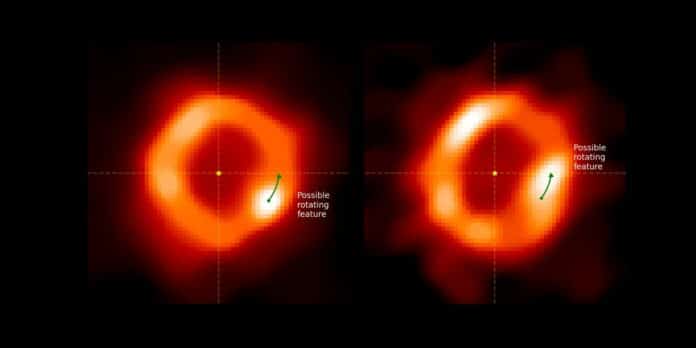Numerous intricate physical processes, including star-disk interactions, magnetic fields, planet formation, and the migration of new planets, take place in the inner regions of protoplanetary discs. To study this region directly requires milliarcsecond angular resolution, beyond the diffraction limit of the world’s largest optical telescopes and even too small for the millimeter-wave interferometer ALMA.
In a new study, scientists used the first and only technology that is powerful enough to probe the circumstellar disks at such small scales. Their images and models revealed a more complex story of possibly moving structures and inner emissions, which raises more questions.
Astronomers from the University of Michigan presented the most detailed known images of the inner region of a planet-forming disk. The images show unexpected moving structures in the disk around a young, massive star called V1295 Aquilae. These structures do look more like dusty infrared donuts.
Furthermore, the images also confirm mysterious inner emissions reported in previous studies.
Located in the equatorial constellation of Aquila, the star V1295 Aquilae is six times more massive than the sun and 900 times more luminous.
Scientists noted, “We are demonstrating the power of interferometry (using two or more telescopes that work together) to perform cutting-edge science at a fraction of the price of space telescopes, which can’t compare with our 50 times better resolution.”
Until recently, astronomers could only image the outer disks using Hubble, ALMA, Keck, or VLT observatories, but the inner disk remained a mystery. Astronomers are now using interferometry to study protoplanetary disks.
“Interferometry works by combining the light from multiple telescopes that are arranged at a certain distance away from each other,” noted scientists.”
“We use the Center for High Angular Resolution Astronomy Array, the largest optical and infrared interferometer in the world. The CHARA Array consists of six one-meter telescopes arranged in a Y-formation which allows for a maximum resolving power equivalent to a single 331-meter diameter telescope. That’s bigger than The Big House—the U-M stadium.”
The “cavity” between where the dusty disc finishes and the star was thought not to be all that dark in earlier theories of inner disc emissions. It is already known that the hollow contains a transparent gas free of dust and does not emit infrared light.
Scientists noted, “The dust in the disk we see glows in infrared radiation because it is being heated by the star. At a certain temperature, the heat is too high for the dust to withstand, and it gets destroyed, so theoretically, we should not see any emission from the middle because the dust is destroyed. The fact that we do see light from the center prompts the question of what is creating the opacity that is giving off light.”
Journal Reference:
Nour Ibrahim et al., Imaging the Inner Astronomical Unit of the Herbig Be Star HD 190073, The Astrophysical Journal (2023). DOI: 10.3847/1538-4357/acb4ea
